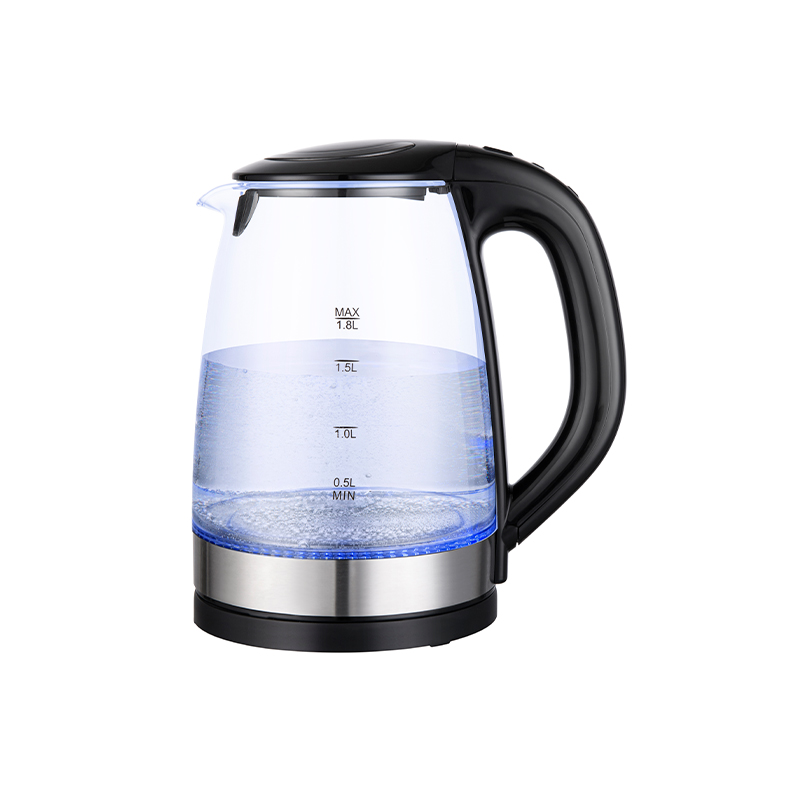+86-18667862027
Web Menu
Product Search
Exit Menu
What factors affect the heating speed of a cordless electric water kettle?
Cordless Electric Water Kettle is popular in modern kitchens because of its convenient use and fast heating performance. Heating speed is one of the most important factors that consumers pay attention to when purchasing electric kettles. There are many factors that affect the heating speed of cordless electric kettles, including heating power, kettle material, water starting temperature, water volume and kettle design. The following will introduce in detail how these factors affect the heating speed of cordless electric kettles.
1. Heating power: The power of an electric kettle directly determines the heating speed. Generally speaking, the power range of electric kettles ranges from 1500 watts to 3000 watts. The greater the power, the more electrical energy converted per unit time, and the faster the water heats. For example, a 2000-watt electric kettle can usually boil a liter of water in 3 to 5 minutes, while a 1500-watt kettle may take more time.
However, although high power means faster heating speed, it also comes with higher energy consumption. Therefore, consumers need to weigh the heating speed and energy saving and environmental protection needs when choosing.
2. The material of the kettle body of the cordless electric kettle will also affect the heating speed. Common kettle body materials include stainless steel, glass, ceramics and plastics.
Stainless steel: Stainless steel has high thermal conductivity and can effectively transfer the heat generated by the heating element to the water quickly, so it heats up relatively quickly. However, the outer shell of the stainless steel kettle body will also become hot during the heating process, so you need to pay attention to safety when using it.
Glass and ceramic: Compared with stainless steel, glass and ceramic have lower thermal conductivity, so the heating speed is slightly slower. But the glass kettle body is transparent, and users can observe the state of the water at any time. Ceramic materials are mostly used for decorative designs. Although the heating speed is slightly slower, it has a certain heat preservation ability.
Plastic: Plastic kettle bodies also heat up quickly, but are generally less used in high-end products because plastics do not conduct heat as evenly as stainless steel and glass, and there may be problems with uneven heating.
3. The initial temperature of the water is also a key factor affecting the heating speed of the cordless electric kettle. If the starting temperature of the water is low (such as ice water), more heat is required to bring it to boiling point, so the heating time will be longer. If the initial temperature of the water is close to room temperature (about 20°C), the heating speed will be significantly faster.
In winter, the initial temperature of the water is generally low, and the heating time of the cordless electric kettle is relatively long. In summer, the temperature of the water is higher and the heating speed is relatively fast. Therefore, the temperature of the external environment also has a certain influence on the heating speed.
4. The design of the kettle body also affects the heating speed. The kettle body with a larger bottom area can increase the contact area between the heating element and the water, thereby accelerating the heat transfer speed and making the water boil faster. On the contrary, the kettle body with a smaller bottom area has a limited contact area between the heating element and the water, which may lead to a slower heating speed.
In addition, the design of the kettle lid will also affect the heating efficiency. A kettle lid with good sealing can effectively prevent heat loss and improve heating efficiency; while a kettle lid with poor sealing may cause heat loss, thereby prolonging the heating time.
5. The heating element of most cordless electric kettles is hidden at the bottom of the kettle body. This design is conducive to uniform heating and prevents the formation of scale. However, the heating elements of some electric kettles may be exposed to the water. Although this can heat the water more directly, it is also easy to accumulate scale, affecting the heating efficiency and water quality. Therefore, modern designs prefer hidden heating elements, which are not only easy to clean, but also provide a relatively stable heating speed.
address
No.935 Qiye Road, Zhouxiang Town, Cixi City, Zhejiang Province, China
Sale’s Email
leila@nbewin.com
sales8@nbewin.com
sales9@nbewin.com
Copyrighte Ningbo Ewin Electrical Appliances Co., Ltd. All Rights Reserved.












